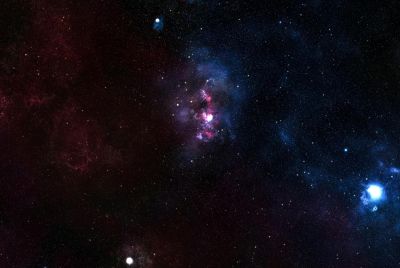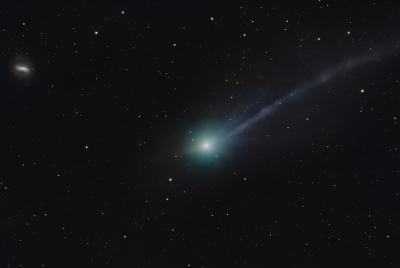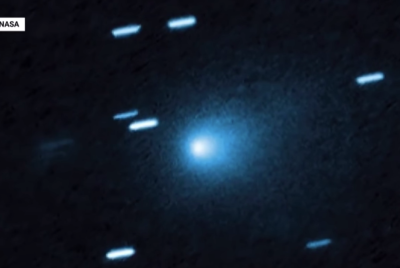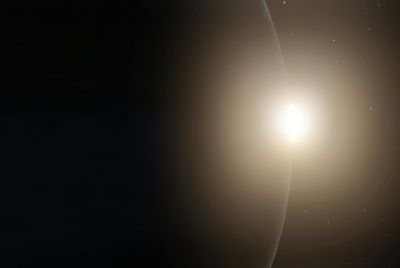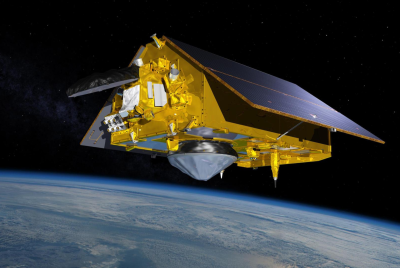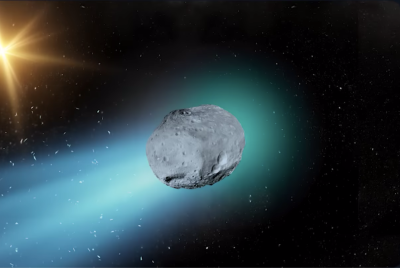Harvard's Avi Loeb Hints 3I/ATLAS 'Jets' Point To 'Alien Technology'
Avi Loeb's Controversial 'Alien Technology' Theory Challenges 3I/ATLAS Natural Comet Consensus

For decades, the search for extraterrestrial life has been confined largely to faint radio signals and conjecture. Now, the potential for discovery has moved from the purely theoretical to the observational, courtesy of a mysterious interstellar visitor: 3I/ATLAS. Discovered in July 2025, this third known visitor to our solar system has since become the focal point of a significant scientific debate, largely fuelled by the controversial assertions of Harvard University astrophysicist Avi Loeb.
While the majority of the astronomical community classifies 3I/ATLAS as a natural, if highly unusual, comet, Professor Loeb sees something far more compelling in its behaviour. He posits that the object's sheer survival after passing dangerously close to the Sun, combined with its anomalous directional plumes, points not to a cosmic snowball, but to an advanced, manufactured vessel—a potential piece of 'alien technology'.
The Unexplained Survival of Interstellar Object 3I/ATLAS
The defining mystery of 3I/ATLAS centres on its perihelion passage—its closest approach to the Sun on 29 October 2025. Typically, a fragile comet nucleus, particularly one exhibiting significant outgassing, should succumb to the Sun's immense heat and tidal forces, fragmenting into debris.
Yet, images secured shortly after, on 11 November 2025, by the Nordic Optical Telescope, revealed something extraordinary: 3I/ATLAS remained "an active, single body, with no evidence for breakup following the recent perihelion passage," according to Loeb's analysis. This integrity, he argues, is incompatible with the natural comet hypothesis.
Loeb had previously calculated that the object's vast gaseous jets suggested a mass loss rate too high for an organic ball of gas and ice to remain intact. He claimed that the sheer surface area required to account for the energy exchange and the mass flow in the large-scale jets—some extending out to a million kilometres—was 'untenable'.
In an essay detailing his research, the scientist explained the immense solar power absorbed by the object at its closest point to the Sun, approximately '700 Joules (standard energy units) per square metre per second,' necessitating an absorbing area larger than 1,600 square kilometres (617 square miles). This number, he declared, was 'untenable for 3I/ATLAS as a single body that maintained its integrity and did not break up into numerous fragments.'
The directionality of the plasma plumes further compounds the enigma. While cometary tails are typically pushed away from the Sun by solar wind, observations of 3I/ATLAS revealed an 'anti-tail' pointing towards the star.
Loeb, well-known for his unconventional thinking, suggested a technological explanation: 'Technological thrusters which point their exhaust towards the sun would accelerate away from the Sun.' He inferred that 'This post-perihelion manoeuvre might be employed by a spacecraft that aims to gain speed rather than slow down through the gravitational assist from the Sun.'
He has also noted the object's unusual trajectory, aligned to within five degrees of the ecliptic plane, suggesting a highly improbable—or perhaps intentional—path. Furthermore, its sheer size is remarkable; 3I/ATLAS is estimated to be approximately a million times more massive than 1I/'Oumuamua, the first known interstellar object, which Loeb also famously speculated was artificial.
The detection of nickel emissions without corresponding iron, a combination more typical of industry-rich alloys used in aerospace applications, only adds another layer of scientific intrigue to the object's profile.
The Scientific Consensus: 3I/ATLAS is a Natural Comet, Not Alien Technology
Despite the captivating nature of Loeb's claims, the majority of the scientific community maintains a position of cautious conventionality, favouring a natural explanation for the interstellar visitor. Several notable recent observations have bolstered this counter-narrative.
Crucially, the MeerKAT radio telescope in South Africa provided direct evidence of cometary activity. It successfully detected 'radio absorption lines by hydroxyl radicals,' which are molecules produced when sunlight breaks down water vapour released from an object's nucleus.
The finding effectively confirms that 3I/ATLAS is losing water as it nears the Sun, behaving precisely like a natural, water-rich comet. Mainstream astronomers emphasised that this radio signature 'is exactly what we'd expect from a water-rich comet,' offering strong proof of a natural origin and resolving years of speculation.
Furthermore, not all experts agree on the significance of the object's survival. Dr. Darryl Seligman, an astronomy professor at Michigan State University, countered Loeb's disintegration argument, stating that the object remaining intact 'is exactly in-line with what I expected to happen.'
This view is based on the nucleus size of 3I/ATLAS, which, while large, is estimated to be around 1 km (0.6 miles). Qicheng Zhang from the Lowell Observatory has similarly confirmed that all images show a 'stable comet' with 'no sign that the nucleus broke apart.'
While Loeb acknowledges the detection of the hydroxyl radicals, he continues to call for full transparency and continued study, leading his own Galileo Project to search for extraterrestrial artefacts.
As 3I/ATLAS continues its hyperbolic trajectory towards a closest approach with Earth in December 2025 (at a safe distance of roughly 167 million miles), the debate surrounding its true nature—natural celestial body or manufactured extraterrestrial visitor—serves as a powerful reminder of humanity's enduring fascination with the unknown reaches of the cosmos.
© Copyright IBTimes 2025. All rights reserved.





